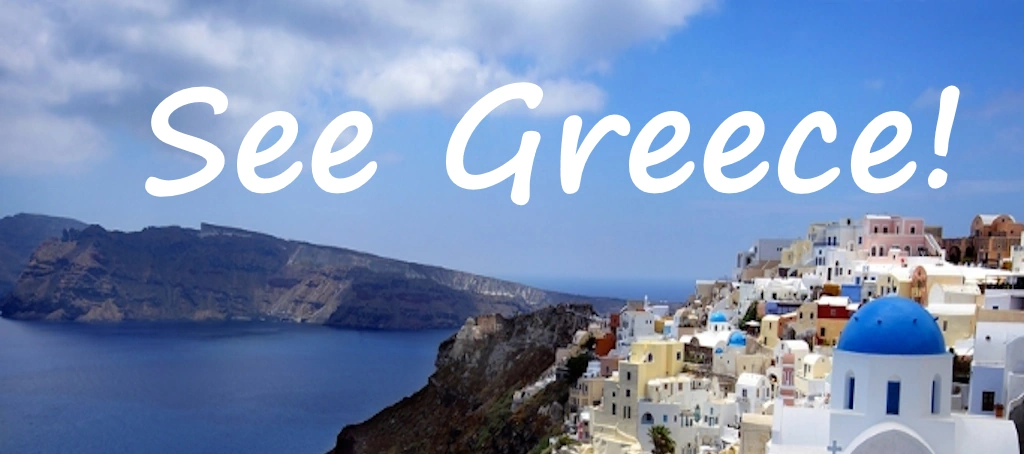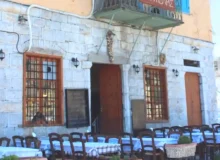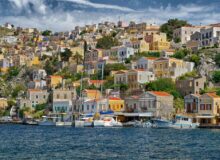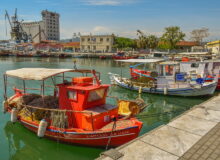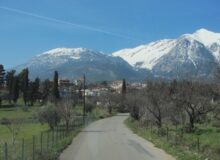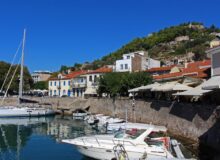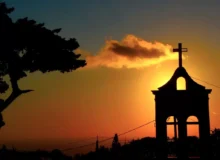Psara
See Greece describes the Greek island of Psara, close to Chios in the North-East Aegean, from its history to its natural beauty, & how to get there.

Psara is a small, rugged island located in the northeastern Aegean Sea, not far from Chios. Despite its modest size—approximately 44 square kilometers—Psara holds a significant place in Greek history and culture. The island is situated northwest of the island of Chios and is part of the Chios regional unit.
With a population of just a few hundred inhabitants, Psara is a quiet, serene destination that offers visitors a glimpse into traditional Greek island life, untouched by mass tourism. Its dramatic landscapes, rich history, and strong maritime traditions make it a unique and compelling place to explore.
Psara’s Historical Significance
Psara is perhaps best known for its pivotal role in the Greek War of Independence (1821–1829). The island was a major naval power during the early 19th century, with a fleet of over 40 ships that played a crucial role in the struggle against Ottoman rule. The Psariots, as the island’s inhabitants are called, were renowned for their bravery and seamanship.
However, their defiance came at a great cost. In 1824, the island suffered a devastating massacre by Ottoman forces, who sought to crush the rebellion. Thousands of Psariots were killed, and many others were forced to flee, leaving the island nearly deserted. This tragic event is commemorated annually, and the island’s history is a source of pride and sorrow for Greeks.
The island’s heroic past is immortalized in Greek literature and poetry, most notably in the works of Dionysios Solomos, Greece’s national poet, who wrote about the devastation of Psara in his famous poem “The Destruction of Psara.” The island’s resilience and sacrifice have become symbols of the Greek spirit and the fight for freedom.
Psara’s Natural Beauty and Landscape
Psara’s landscape is characterized by its wild, untamed beauty. The island is rocky and mountainous, with steep cliffs plunging into the deep blue Aegean Sea. Its coastline is dotted with secluded coves and pristine beaches, such as Lazareta, Kato Gialos, and Limnos, which are perfect for swimming and relaxation. The lack of large-scale development has preserved the island’s natural charm, making it an ideal destination for those seeking tranquility and a connection with nature.
The island’s interior is equally attractive, with rolling hills, terraced fields, and scattered chapels. The traditional village of Psara, located on the eastern side of the island, is the main settlement and serves as the island’s port. Its whitewashed houses, narrow alleys, and picturesque harbor have a timeless charm. The village is dominated by the Church of Agios Nikolaos, a beautiful blue-domed church that stands as a symbol of the island’s faith and resilience.
Psara’s Maritime Traditions
Psara’s maritime heritage is deeply ingrained in its culture. For centuries, the island’s inhabitants have been skilled sailors and shipbuilders, relying on the sea for their livelihood. Even today, fishing and boatbuilding remain important aspects of local life. The island’s maritime museum, though small, offers insights into Psara’s seafaring history, showcasing artifacts, models of ships, and historical documents.
Modern-Day Psara
Today, Psara is a peaceful retreat for those looking to escape the hustle and bustle of modern life. The island’s small population ensures a close-knit community, and visitors are often struck by the warmth and hospitality of the locals. Life on Psara moves at a slow pace, dictated by the rhythms of nature and the sea. There are few amenities, but this is part of the island’s appeal—it is a place to disconnect, reflect, and immerse oneself in the simplicity of island living.
Getting to Psara
Once you arrive in Chios, you will need to take a ferry to Psara. The ferry service to Psara is operated by local boats and is less frequent than routes to more popular destinations. The journey from Chios to Psara takes about 2.5 to 4 hours, depending on the type of vessel and weather conditions.
Ferry Schedule: Ferry schedules to Psara are limited, especially outside the summer season. During the peak tourist season (June to September), there are usually a few departures per week. It’s essential to check the schedule in advance and book your tickets early, as the ferries can fill up quickly.
Departure Point: Ferries to Psara typically depart from the main port of Chios Town.
Alternative Routes: While Chios is the most common gateway to Psara, there are occasional ferry connections from other nearby islands, such as Lesvos or Samos, depending on the season and availability. However, these routes are less frequent and may require additional planning.
